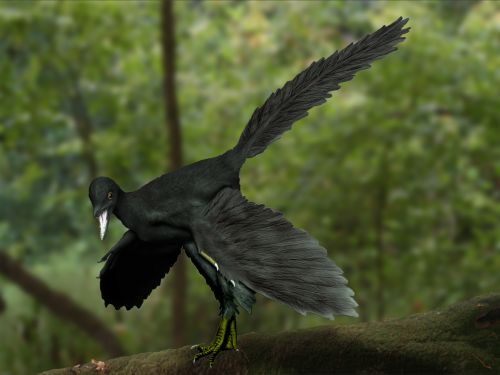Piecing Together the Archaeopteryx Puzzle
The scientific consensus today is that Archaeopteryx is one of the earliest birds. Find out why these fossils have had such a big impact.
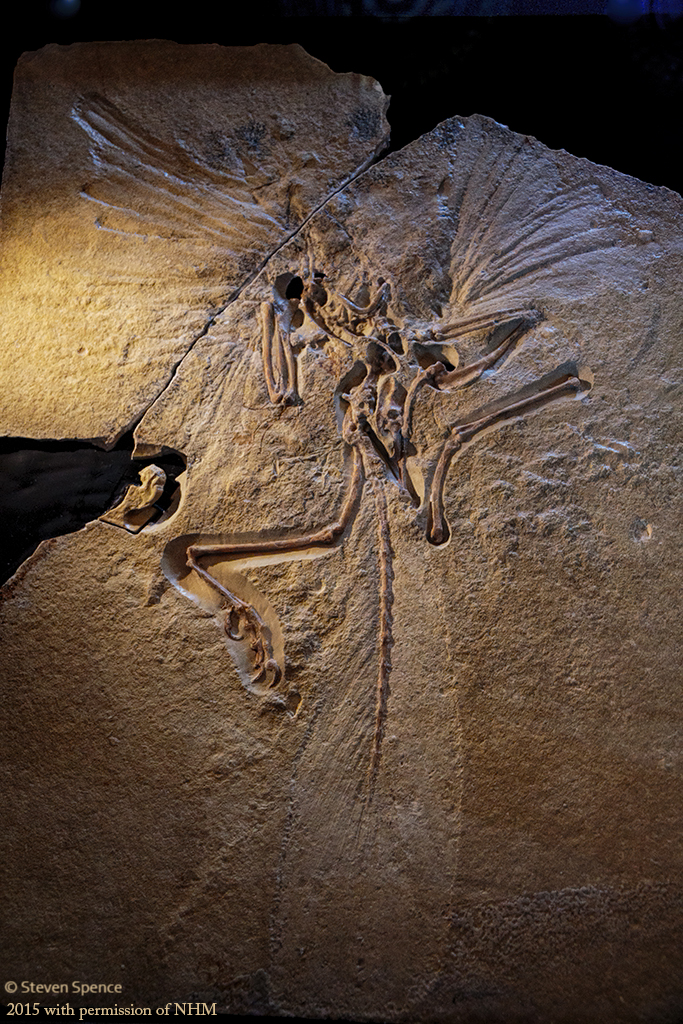

Natural History Museum)
Bird, Dinosaur, or Both?
The 1861 discovery of Archaeopteryx made it one of the most important fossils ever found. Coming just two years after Darwin’s On the Origin of Species, the finding caused a sensation. It had teeth and a bony tail like a lizard, and feathers like a bird. Archaeopteryx was assumed to be a transitional form between non-avian dinosaurs and modern birds, thus supporting Darwin’s theory of evolution, although this assumption was controversial and by no means immediately accepted.
In the 150-plus years following the discovery of Archaeopteryx, scientists have sometimes classified Archaeopteryx as a bird and other times as a reptile. The scientific consensus today is that Archaeopteryx is one of the earliest birds, so let’s look at why the classification has been disputed over the years.
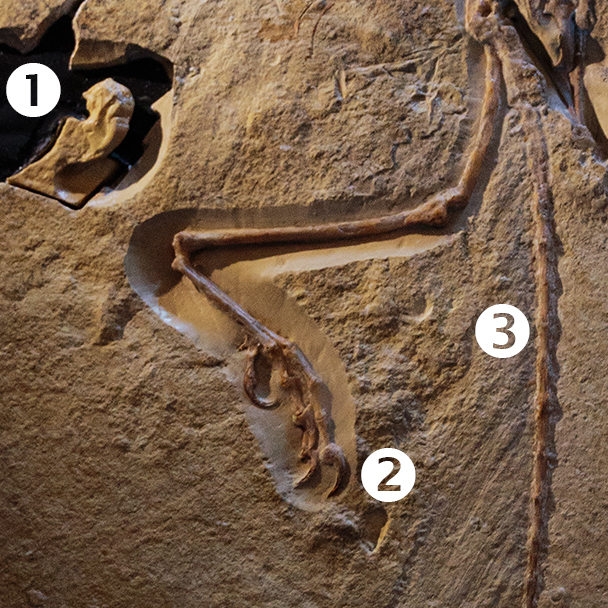

#3 bony tail
Archaeopteryx Anatomy
Archaeopteryx has some anatomical features that are not present in modern birds. Several obvious differences from the birds of today are:
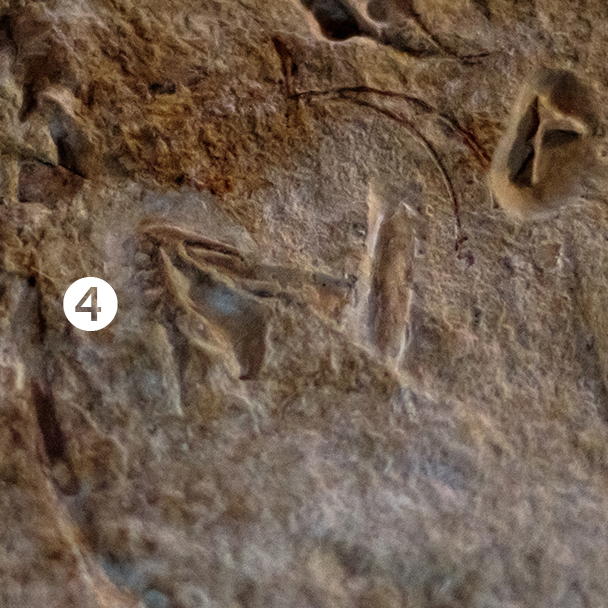

- three fingers with claws on the wings (not clearly visible on the London specimen)
- a long, bony tail
- a “killing claw” on the second toe of the foot
- a bony jaw with teeth
More Bird than Not
Archaeopteryx has other features that are birdlike:
Feathers: While fossil evidence shows many dinosaurs had some feathers, those of Archaeopteryx are more advanced and demonstrate different attributes adapted to flight. They are asymmetrical and vaned as in modern flying birds.
Brain: The specimen in the Natural History Museum (London) had an intact brain case at the edge of the fossil specimen. It was removed and studied using computer tomography. One of the Natural History Museum’s scientists, Dr. Angela Milner, led the international study. The brain clearly demonstrates avian features — including an avian brain part call the “wulst” that is used for enhanced visual processing — all of which are needed for flight.
Feet: The fossil shows that the animal had a “perching” toe on the feet.
RELATED: RUNNING ROBOTS MAY BE INSPIRED BY BIRDS
Could Archaeopteryx Fly?
The evidence is clear that Archaeopteryx was capable of flight. However, there has been debate about whether it was a glider or a powered flier. Proponents of the glide hypothesis have argued that Archaeopteryx’s shoulders may not have allowed for an upstroke to generate lift. Others point out that the wishbone was relatively flat and would not have been well suited to powered flight.
Today’s consensus is that Archaeopteryx was capable of powered flight. Discussions continue about the strength and size of the pectoral muscles, the power-to-weight ratio, and even if a reptilian or avian muscle mode were used. The feather shape and distribution strongly favor a bird capable of powered flight. Exactly how well and how far this early bird could fly remains unknown. It is believed to have been a slow flyer, and had flight characteristics similar to a modern pheasant or crow. Archaeopteryx was similar in size to a modern raven.
What Color Was Archaeopteryx?
We can’t be certain of the coloration or even whether it had feathers on the head and neck. However, research has shown that the feathers contained melanosomes and melanin structures, making them black. Some studies have suggested that Archaeopteryx may have had white and black plumage, while other examinations suggest an overall black coloration. As our technology advances, we will probably learn more from the fossil.
Where Did it Live? Why Is It So Well Preserved?
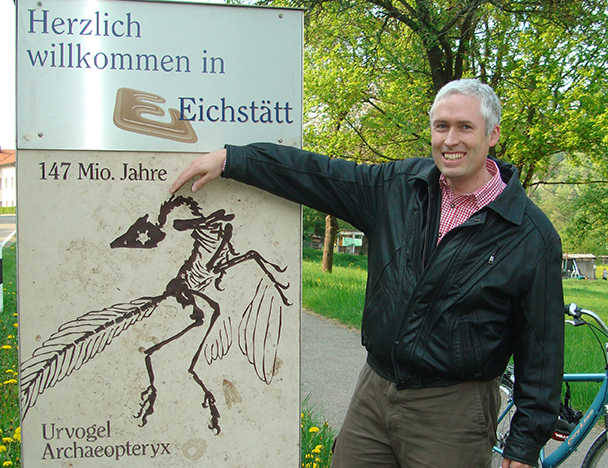

All of the Archaeopteryx fossils found to date are from the Solnhofen limestone deposits near Langenaltheim, Germany in 1861. These deposits were laid down 144 to 150 million years ago. At the time this was a shallow marine archipelago. Over time, some areas were cut off from the sea and became extremely salty. Eventually, no organisms could survive in the deeper parts of these basins due to the high salinity and lack of oxygen. Under these special conditions, many creatures died and were exceptionally well preserved. Jellyfish, dragonflies, beetles, sea lilies, and crustaceans have all been found here, some in exceptional detail.
History of the London Specimen
The London Archaeopteryx was the first full specimen to be scientifically described. Prior to the find, Archaeopteryx was described solely on the basis of a single feather found in 1861. In 2011, the London Archaeopteryx was declared the official reference specimen, or holotype, for the species.
The London Archaeopteryx specimen was unearthed in 1861. At one point, physician Karl Häberlein received it as payment for medical services.
In the meantime Richard Owen, founder of the London Natural History Museum, along with George Waterhouse, curator of the British Museum’s Geology Department, negotiated to obtain the fossil. Eventually a two-year package purchase of Dr. Häberlein’s entire collection was agreed upon. Archaeopteryx was purchased first for £450 and the following year the remaining 1700 fossils in Dr. Häberlein’s collection were bought for an additional £250 — the equivalent total cost in today’s terms of approximately £30,000 (46,000 USD).
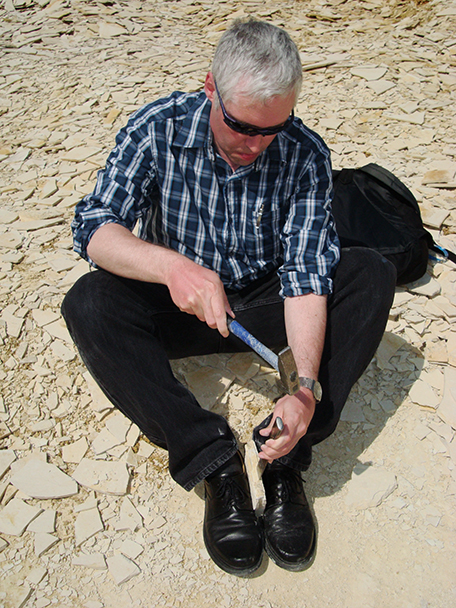

Impact of the London Specimen
Scientists immediately recognized Archaeopteryx as potentially one of the intermediate life forms proposed in Charles Darwin’s Origin of Species. Although Richard Owen believed Archaeopteryx to be a bird and not a transitional species, Thomas Huxley formally advanced it as an evolutionary link between birds and dinosaurs in 1868.
In the 20th century, Huxley’s early work faded into the background as most paleontologists came to agree with Gerhard Heilmann’s work, The Origin of Birds (1926), which identified thecodonts as the ancestors to birds. Thecodonts are now considered an obsolete taxonomic grouping. They were crocodile shaped with socketed teeth and included Permian (290 to 250 million years ago) ancestors to crocodiles, dinosaurs, and pterosaurs.
In the 1960s and 70s, a shift in thinking back to a bird-dinosaur relationship took place. In 1969, John Ostrom scientifically described a new species, Deinonychus. The following year he analysed a fossil in the Dutch Tyler Museum, which had originally beeen classified as Pterodactylus crassipes, but was actually an Archaeopteryx (now known as the Haarlem specimen). Ostrom recognized the relationship between Deinonychus and Archaeopteryx, which kindled the current “Dinosaur Renaissance.”
The London specimen triggered the first recognition of a bird-dinosaur link. As the holotype for Archaeopteryx, it continues to be crucial in research into the history of birds.
Resources and Further Reading
Special thanks to the Natural History Museum, London for their cooperation in the research for this article.
Featured image: Artist’s restoration of Archaeopteryx following Carney’s 2011 feather coloration study, indicating that at least some of the feathers on the animal were black (By NobuTamura, Own work, CC BY-SA 3.0 via Wikimedia Commons)

